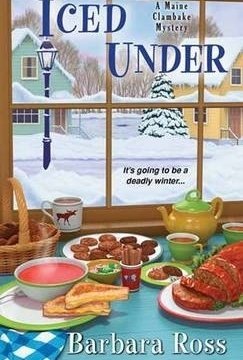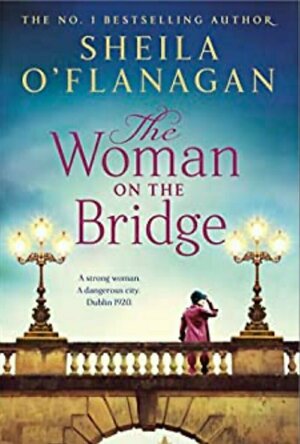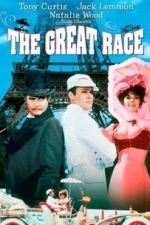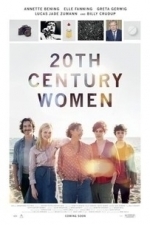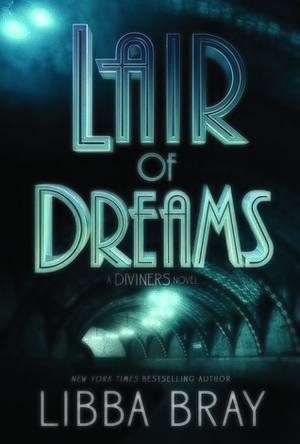Search
Mark @ Carstairs Considers (2450 KP) rated Iced Under in Books
Mar 9, 2018
It’s a cold, quiet February in Busman’s Harbor until Julia’s mom gets a mysterious package in the mail. Inside is a necklace, a family heirloom worth seven figures, that disappeared in the 1920’s. What happened to it all those years ago? And who sent it today?
This is definitely a different plot for a cozy, but I really loved it. Yes, there is a murder, but it comes in later and the mystery of tracking down family and the story behind the necklace takes center stage. Honestly, I like the break from the familiar formula. The characters are fun as always, especially the new ones. And I might have cried (in a good way) through the last couple of chapters. Fans of the series will appreciate this one best, but they will love it.
Note: I received an ARC of this book.
Read my full review at <a href="http://carstairsconsiders.blogspot.com/2016/12/book-review-iced-under-by-barbara-ross.html">Carstairs Considers</a>.
This is definitely a different plot for a cozy, but I really loved it. Yes, there is a murder, but it comes in later and the mystery of tracking down family and the story behind the necklace takes center stage. Honestly, I like the break from the familiar formula. The characters are fun as always, especially the new ones. And I might have cried (in a good way) through the last couple of chapters. Fans of the series will appreciate this one best, but they will love it.
Note: I received an ARC of this book.
Read my full review at <a href="http://carstairsconsiders.blogspot.com/2016/12/book-review-iced-under-by-barbara-ross.html">Carstairs Considers</a>.

Häagen-Dazs Indonesia
Shopping and Lifestyle
App
By indulging just a minimum of air, we produce an ice cream that is richer in taste, creamier in...
ClareR (6037 KP) rated The Woman on the Bridge in Books
May 29, 2023
This is a wonderful story based on Sheila O’Flanagans own grandmothers experiences.
It’s the 1920’s and Ireland is fighting for its independence. There’s so much going on in this story: the fight for Irelands independence; domestic violence; poverty; tuberculosis; women’s rights; emigration of the Irish to the USA and other European countries.
Winifred O’Leary is a strong woman who wants to be independent, both as a woman and as an Irish woman. The book doesn’t go too much into the ins and outs of the political situation, but I’ve certainly learnt more about what went on during this time. It was a hard time to be living in.
Winnie’s husband certainly experiences a lot of this hardship. He’s imprisoned for his actions with his fellow freedom fighters.
This is a love story as well as a story about the politics at the time. I really enjoyed it and I realise that it was first and foremost a love story - and an enjoyable one at that!
It’s the 1920’s and Ireland is fighting for its independence. There’s so much going on in this story: the fight for Irelands independence; domestic violence; poverty; tuberculosis; women’s rights; emigration of the Irish to the USA and other European countries.
Winifred O’Leary is a strong woman who wants to be independent, both as a woman and as an Irish woman. The book doesn’t go too much into the ins and outs of the political situation, but I’ve certainly learnt more about what went on during this time. It was a hard time to be living in.
Winnie’s husband certainly experiences a lot of this hardship. He’s imprisoned for his actions with his fellow freedom fighters.
This is a love story as well as a story about the politics at the time. I really enjoyed it and I realise that it was first and foremost a love story - and an enjoyable one at that!
BankofMarquis (1832 KP) rated The Great Race (1965) in Movies
Jul 6, 2018
A fun throwback to 1920's Silent Film Farces
In a tribute to films of a bygone era, Director Blake Edwards pays homage to silent film farces of the 1920's - even dedicating this film to "Mr. Laurel and Mr. Hardy" - with the slapstick comedy THE GREAT RACE - and succeeds, mostly.
Reteaming Tony Curtis (as the brave, virtuous and good "The Great Leslie") and Jack Lemmon (as the sinister, dastardly and evil "Professor Fate"), The Great Race is great fun watching these two cartoon characters spar and parry with each other throughout the course of this 2 hour and 40 minute farce.
Lemmon, in particular, relishes in dual roles as the menacing Fate, always dressed in black, twirling his mustache and coming up with scheme after scheme to derail Leslie (think the Coyote in the RoadRunner cartoons). His overacting and hammyness in the character is perfect for the tone that this film has set. And his maniacal laugh is one to remember - unless you are remembering the childlike guffaws of the other character Lemmon portrays, the doppelganger of Fate, Crown Prince Frederick. Both these characters are fun to watch and Fate, especially, plays well against his bumbling assistant and foil, "Max", played in utter buffoonishness by the great Peter Falk.
Joining Curtis for the "good guys" is Natalie Wood as Suffragette and Newspaper
Reporter Maggie DuBois (obviously tailored after real life Suffragette and Newspaper Reporter Nellie Bly). It is said that Curtis and Wood did not get along on set (they had worked together in 2 other films and grew to dislike each other), but their on-screen chemistry cannot be ignored and they are fun together. As is the great Keenan Wynn as Leslie's mechanic and friend Hezekiah Sturdy.
But it is not the characters that makes this film go it is the set pieces and frenetic pacing that Director Edwards put before us. From thrilling chase scenes to a Western barroom brawl, to a trip through a blizzard with a polar bear to the "largest pie fight ever put on screen", this film delivers the goods in a wholesome, 1960's way that makes me truly say...
"They don't make 'em like this anymore".
8 out 10 stars and you can take that to the Bank (ofMarquis)
Reteaming Tony Curtis (as the brave, virtuous and good "The Great Leslie") and Jack Lemmon (as the sinister, dastardly and evil "Professor Fate"), The Great Race is great fun watching these two cartoon characters spar and parry with each other throughout the course of this 2 hour and 40 minute farce.
Lemmon, in particular, relishes in dual roles as the menacing Fate, always dressed in black, twirling his mustache and coming up with scheme after scheme to derail Leslie (think the Coyote in the RoadRunner cartoons). His overacting and hammyness in the character is perfect for the tone that this film has set. And his maniacal laugh is one to remember - unless you are remembering the childlike guffaws of the other character Lemmon portrays, the doppelganger of Fate, Crown Prince Frederick. Both these characters are fun to watch and Fate, especially, plays well against his bumbling assistant and foil, "Max", played in utter buffoonishness by the great Peter Falk.
Joining Curtis for the "good guys" is Natalie Wood as Suffragette and Newspaper
Reporter Maggie DuBois (obviously tailored after real life Suffragette and Newspaper Reporter Nellie Bly). It is said that Curtis and Wood did not get along on set (they had worked together in 2 other films and grew to dislike each other), but their on-screen chemistry cannot be ignored and they are fun together. As is the great Keenan Wynn as Leslie's mechanic and friend Hezekiah Sturdy.
But it is not the characters that makes this film go it is the set pieces and frenetic pacing that Director Edwards put before us. From thrilling chase scenes to a Western barroom brawl, to a trip through a blizzard with a polar bear to the "largest pie fight ever put on screen", this film delivers the goods in a wholesome, 1960's way that makes me truly say...
"They don't make 'em like this anymore".
8 out 10 stars and you can take that to the Bank (ofMarquis)
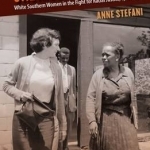
Unlikely Dissenters: White Southern Women in the Fight for Racial Justice, 1920-1970
Book
Stefani redefines the proverbial 'southern lady' with a close look at over fifty white, anti-racist...
Suswatibasu (1703 KP) rated 20th Century Women (2017) in Movies
Oct 15, 2017 (Updated Oct 15, 2017)
A solid drama with beautiful cinematography
I began watching this thinking it would be like Little Miss Sunshine aka dark humour but good comedy. But it's not at all - it's pure drama, but still good nevertheless.
Annette Bening plays a lonely 54 year old mother living with her teenage son, and various lodgers in 1979. There's a massive generational divide, Bening was born in the 1920's and feels overwhelmed with her son in this era where punk rock is all the rage and there's general apathy at the world.
At this point she asks for help from her lodger, a young feminist photographer in remission from cervical cancer and a much older hippy mechanic. Instead they seem to confuse the situation further due to a gap in understanding about one another's circumstances, causing mother and son to further drift apart.
It's a different style of coming-of-age film because it shows how the mother's role is also changing and adapting to a new age of politics and societal pressures. A poignant, beautifully shot drama.
Annette Bening plays a lonely 54 year old mother living with her teenage son, and various lodgers in 1979. There's a massive generational divide, Bening was born in the 1920's and feels overwhelmed with her son in this era where punk rock is all the rage and there's general apathy at the world.
At this point she asks for help from her lodger, a young feminist photographer in remission from cervical cancer and a much older hippy mechanic. Instead they seem to confuse the situation further due to a gap in understanding about one another's circumstances, causing mother and son to further drift apart.
It's a different style of coming-of-age film because it shows how the mother's role is also changing and adapting to a new age of politics and societal pressures. A poignant, beautifully shot drama.
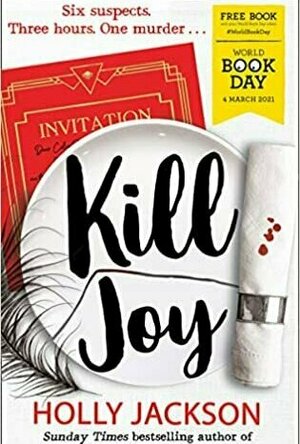
Kill Joy
Book
A thrilling prequel story to the bestselling, award-winning A Good Girl's Guide to Murder! A GOOD...
AmyBee (4 KP) rated The Bell Jar in Books
Sep 5, 2018
I cannot believe I have only just read this for the first time! The Bell Jar is definitely deserving of it's status as a 'classic' in semi-autobiographical fiction. Plath really captures you with the stream-of-consciousness monologue of Esther Greenwood, a young woman who narrates her journey into insanity in the 1950's.
The Bell Jar is narrated in a similar vein to and is quite reminiscent of Virginia Woolf's novel 'Mrs Dalloway', although it has a decidedly more risqué tone as the narrator talks in great detail about subjects which would not have been deemed acceptable in the 1920's (such as losing her virginity!).
What particularly gripped me about this novel is that Esther's mental illness seems to sneak up on her and this is reflected in the novel, as it almost seems to take the reader by surprise that this seemingly normal young woman is falling deeper and deeper into her illness.
Mental health stigma is also clearly represented in the novel, as it almost seem is at points that Esther's illness is treated as a joke, and definitely not taken seriously by most. It's also interesting to read about the archaic means of treatment for mental health sufferers eg Electroconvulsive Therapy (ECT) AKA Electroshock therapy, and it's aftermath.
All in all, a very thoroughly enjoyable read. Highly recommended for lovers of classic literature surrounding mental health issues.
The Bell Jar is narrated in a similar vein to and is quite reminiscent of Virginia Woolf's novel 'Mrs Dalloway', although it has a decidedly more risqué tone as the narrator talks in great detail about subjects which would not have been deemed acceptable in the 1920's (such as losing her virginity!).
What particularly gripped me about this novel is that Esther's mental illness seems to sneak up on her and this is reflected in the novel, as it almost seems to take the reader by surprise that this seemingly normal young woman is falling deeper and deeper into her illness.
Mental health stigma is also clearly represented in the novel, as it almost seem is at points that Esther's illness is treated as a joke, and definitely not taken seriously by most. It's also interesting to read about the archaic means of treatment for mental health sufferers eg Electroconvulsive Therapy (ECT) AKA Electroshock therapy, and it's aftermath.
All in all, a very thoroughly enjoyable read. Highly recommended for lovers of classic literature surrounding mental health issues.
Merissa (13508 KP) rated Lair of Dreams (The Diviners, #2) in Books
May 20, 2023
This is an epic book that is based in 1920's New York, and everything you can associate with that - including flappers, parties and racism, to name but a few. A sleeping sickness is sweeping New York, starting off in Chinatown. It is up to Evie and a cast of characters to figure out what is happening and how to stop it.
This is the second book in the series and as such I would recommend reading book 1, The Diviners. I haven't and will admit to feeling slightly lost when the characters would think about or discuss what had happened before. The characters are all well-established with their own quirks and foibles by the time this book starts, so it did take a while to actually feel like I knew these people. Personally, my favourite characters were Ling and Henry, and the friendship that developed between them.
A dark, gothic and creepy book that may give you shivers, definitely recommended if you are on the lookout for something a bit different.
* A copy of this book was provided to me with no requirements for a review. I voluntarily read this book, and the comments here are my honest opinion. *
Merissa
Archaeolibrarian - I Dig Good Books!
Feb 15, 2016
This is the second book in the series and as such I would recommend reading book 1, The Diviners. I haven't and will admit to feeling slightly lost when the characters would think about or discuss what had happened before. The characters are all well-established with their own quirks and foibles by the time this book starts, so it did take a while to actually feel like I knew these people. Personally, my favourite characters were Ling and Henry, and the friendship that developed between them.
A dark, gothic and creepy book that may give you shivers, definitely recommended if you are on the lookout for something a bit different.
* A copy of this book was provided to me with no requirements for a review. I voluntarily read this book, and the comments here are my honest opinion. *
Merissa
Archaeolibrarian - I Dig Good Books!
Feb 15, 2016
Suswatibasu (1703 KP) rated Killers of the Flower Moon: The Osage Murder and the Birth of the FBI in Books
Nov 24, 2017 (Updated Nov 24, 2017)
Mind-blowing and a disconcerting read
I can say without a doubt, this is one of the best novels I've read this year. It is a disturbing and excellent real-life account of the plight of Native Americans who found themselves the unwitting beneficiaries of a financial boom in the 1920's after oil was discovered under the previously barren and worthless reservation they were moved to.
This fantastic book relates to a story covered in blood, racism and greed. Oil, black gold, made the Plains Osage tribe incredibly wealthy. By the 1890's, the remnants of this great people were in the scrub lands of Northern Oklahoma.
Their life was continually harsh, the soil poor. In the late 1890's, by chance, oil was struck in Osage County, flowing in abundance and in great demand. From 1918 to 1928, $202 million was paid to the tribe which by then numbered around 3000, transforming their lives. 680 barrels were obtained in a day in 1920 from a strike at Burbank, angering the whites and thus began the "Reign of Terror" in which hundreds of the Osage tribe members were subsequently killed in the most horrendous display of corruption.
The book itself begins in 1921 with an Osage woman who had a share of the mineral riches to be found under the Osage land. Mollie like others was subject to a law that treated her tribe as juveniles whose estates had to be administered by white guardians, that is local lawyers and businessmen, appointed by local courts.
Guardianship was unpoliced and few records were kept. Fraud was therefore prevalent and many of the local white community participated in corruption - murder was widespread as a result. Mollie's sister, Anna, was the first noticeable murder in which she was shot and killed, launching a major probe into similar killings in the area. Many other murders were committed over the following years, with poisoning as the most common method of killing. Essentially it was a covert form of genocide.
The locals refused to act, partly due to fear or involvement in this heinous plot, so J. Edgar Hoover, who was the first president of the FBI, became involved in the investigation. He sent a tall Texas Ranger called Tom White to scrutinise an epic series of murders in which even investigators were targets.
What follows is not only history but a riveting detective story and the book demonstrates yet again the enormous cost of American nationhood. It provides some fascinating insight into the early workings of the FBI (not least Hoover's nascent megalomania) for whom this was a celebrated case and a valuable reminder for folk who thought the persecution of American Indians ended in the late 19th century. Author and journalist David Grann does a superb job in collating all of the information with dozens of pages solely highlighting attributions and references - it is thorough and well-researched. Therefore it is hardly surprising that Hollywood has snapped up this book to turn it into a major motion picture - let's hope they don't whitewash history once again.
This fantastic book relates to a story covered in blood, racism and greed. Oil, black gold, made the Plains Osage tribe incredibly wealthy. By the 1890's, the remnants of this great people were in the scrub lands of Northern Oklahoma.
Their life was continually harsh, the soil poor. In the late 1890's, by chance, oil was struck in Osage County, flowing in abundance and in great demand. From 1918 to 1928, $202 million was paid to the tribe which by then numbered around 3000, transforming their lives. 680 barrels were obtained in a day in 1920 from a strike at Burbank, angering the whites and thus began the "Reign of Terror" in which hundreds of the Osage tribe members were subsequently killed in the most horrendous display of corruption.
The book itself begins in 1921 with an Osage woman who had a share of the mineral riches to be found under the Osage land. Mollie like others was subject to a law that treated her tribe as juveniles whose estates had to be administered by white guardians, that is local lawyers and businessmen, appointed by local courts.
Guardianship was unpoliced and few records were kept. Fraud was therefore prevalent and many of the local white community participated in corruption - murder was widespread as a result. Mollie's sister, Anna, was the first noticeable murder in which she was shot and killed, launching a major probe into similar killings in the area. Many other murders were committed over the following years, with poisoning as the most common method of killing. Essentially it was a covert form of genocide.
The locals refused to act, partly due to fear or involvement in this heinous plot, so J. Edgar Hoover, who was the first president of the FBI, became involved in the investigation. He sent a tall Texas Ranger called Tom White to scrutinise an epic series of murders in which even investigators were targets.
What follows is not only history but a riveting detective story and the book demonstrates yet again the enormous cost of American nationhood. It provides some fascinating insight into the early workings of the FBI (not least Hoover's nascent megalomania) for whom this was a celebrated case and a valuable reminder for folk who thought the persecution of American Indians ended in the late 19th century. Author and journalist David Grann does a superb job in collating all of the information with dozens of pages solely highlighting attributions and references - it is thorough and well-researched. Therefore it is hardly surprising that Hollywood has snapped up this book to turn it into a major motion picture - let's hope they don't whitewash history once again.
